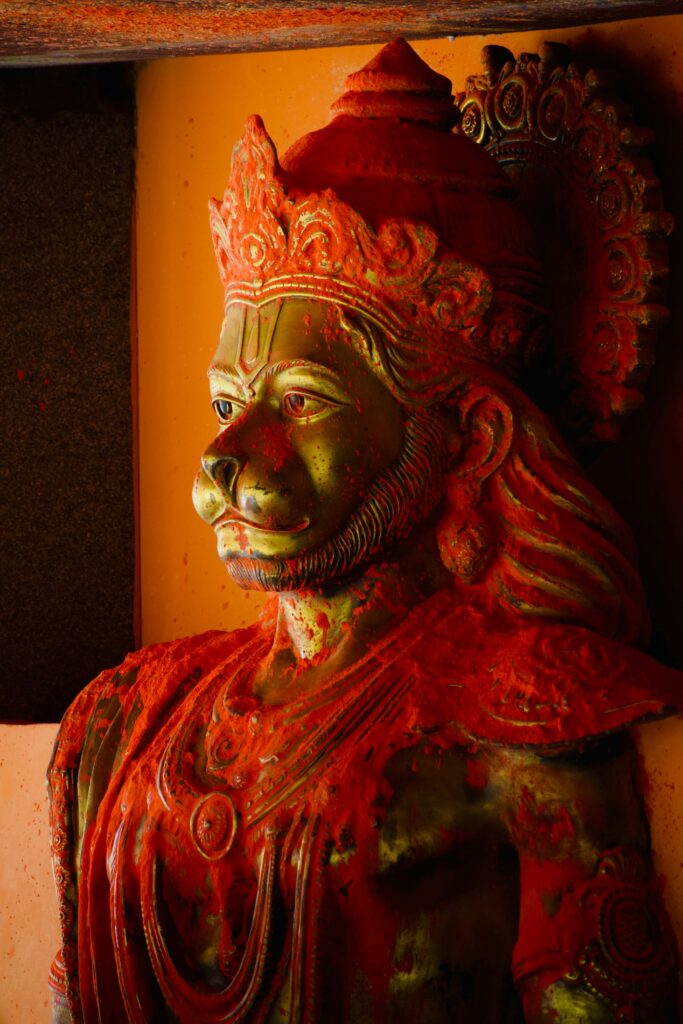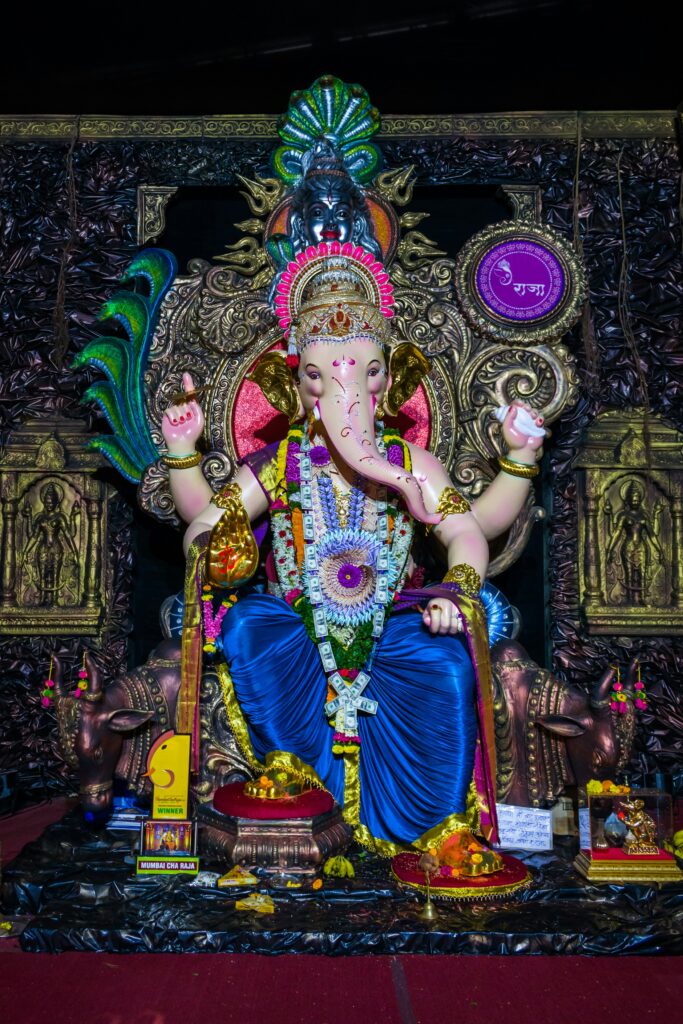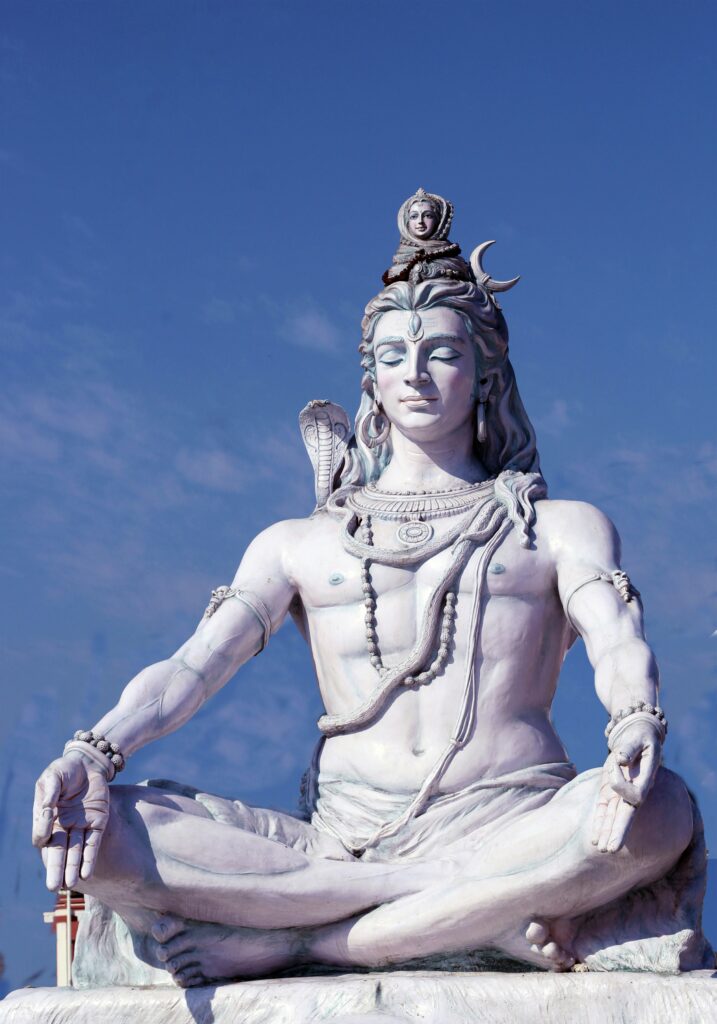Mantra – An Introduction to Ancient Magic Syllables
Mantra – An Introduction to Ancient Magic Syllables
A mantra is an ancient chant, traditionally in the Sanskrit language, and deeply associated with Hindu devotional practices. In modern times Bhakti Yoga, the yoga of devotion, has become a more popular spiritual path in the western yoga space. Many yogis really resonate with the heart-centered practices of kirtan (call-and-response chanting with musical accompaniment), mantra repetition, and devotional singing.
Whether you’re new to these practices or deepening your journey, understanding the energetic significance of mantras, their connection to deities (or universal energies), and how they relate to both ancient tradition and modern life can open you to profound transformation.
Learning a mantra from a Guru
One of the most important lessons to understand is that mantras are not just words. They are vibrational formulas. Saying a mantra with the wrong pronunciation or intention can dilute its power or, in some traditions, even manifest the opposite effect. That’s why mantras have traditionally been passed down through a guru-disciple lineage, where exact pronunciation, rhythm, and understanding are preserved.
When you chant a mantra, you’re not just repeating syllables; you’re aligning yourself with a specific frequency of consciousness. These frequencies are often represented by deities in Hinduism, but you can also choose to think of them as archetypal energies, each representing a different facet of reality.
Hanuman is the energy of strength and devotion, the glue that holds everything together.
Shiva represents pure consciousness and transformation.
Durga is the divine mother, fierce and protective.
Lakshmi brings abundance, beauty, and grace.
Saraswati governs creativity and knowledge—Sanskrit, the language of mantras, is said to flow from her.
Brahma is the creative force, the beginning of all things.
It can be challenging to find a guru. Often you see them advertising themselves, however, traditionally you should wait for the guru to find you. Use your intuition and trust it. Real teachers should care more about the mantras than the money.
In Transcendental Meditation, or “T.M.” as people call it, the guru gives the student a personalized mantra. This can be a powerful personal mantra. However, there is usually a substantial monetary cost for the mantra that is paid to the guru.
The building blocks of mantras
Many mantras include seed sounds or bija mantras—single syllables believed to carry potent energy. Here are a few key components found in devotional mantras:
Om – The primordial sound, representing Brahma and the vibration of the entire universe.
Srim (Shreem) – Associated with Lakshmi, this sound invites abundance.
Hrim (Hreem) – Often connected to Durga or Shakti, the divine feminine power.
Dum (Doom) – A protective mantra sound tied to Durga.
Sri (Shree) – A term of respect and auspiciousness.
Namo, Namaha – Words of salutation and reverence.
Jai – Means “victory!” Often used to praise a deity (e.g., “Jai Hanuman!”).
Swaha (svaha) – A ritual offering, often used to seal a mantra with devotion.
These sounds might seem simple, but when repeated with intention and faith, they can shift your state of mind and open your heart.
Mantra in Bhakti yoga
While yoga in its physical form isn’t inherently Hindu, its roots are intertwined with the spiritual and philosophical traditions of India. Bhakti Yoga is one of the four classical paths of yoga, along with Karma yoga (selfless service), Jnana yoga (knowledge), and Raja yoga (meditation and discipline).
Mantra is used across all paths of yoga, but especially in Bhakti, where the sound becomes the devotional bridge between you and the divine.
Kirtan is one of my favorite practices. It’s often described as mantra meditation with music, usually done in a group setting with instruments like the harmonium, guitars, and drums. A leader chants a mantra and the group repeats it back. The back-and-forth rhythm creates a connection between the singers and the crowd.
Tantric mantras in ceremony
Often in traditions of tantra, mantras are recited as part of a ceremony. A Puja is a ceremony in which attendees recite mantras, following a leader. Ceremonies are often centered around a fire, or dhuni, which is kept burning for the duration. These ceremonies can cultivate spiritual energy in a trance-like fashion. The tantric mantras can speed up and grow more intense as the ceremony builds energy, with some reporting feelings of rising Kundalini, the snake-like energy in the spine.
In the modern day, tantra is often associated with sex. However, traditional tantra is more about connecting with spiritual energy, meditation, and finding interconnectivity with nature, and many modern tantrikas have overhyped the sexual aspects of the practice.
Japa meditation and how to repeat a mantra with your mala
Japa is a form of meditation in which a mantra is recited repeatedly, either silently or out loud. The repetition of the mantra can be a point for your mind to focus on, a single-point-of-focus which helps calm the mind and decrease the frequency of your thoughts. For Japa meditation it can be useful to use a mala, or Japa beads, to help you count the number of mantra repetitions. Malas usually are made with 108 beads. These mala beads represent the divine number 108, and chanting a mantra 108 times can be a powerful meditation.
Japa meditation or similar forms can be found in Hinduism, Jainism, Buddhism, Sikhism religions of India and around the world. Below are a few mantras that are great for Japa meditation:
Om Chanting 108 Oms is a great way to connect with divine vibrations.
Rama Chanting Ram or Rama is a simple but effective mantra to the hero of the epic Ramayana.
Hare Krishna invoking the name of Krishna, the 8th avatar of Vishnu can bring about spiritual peace.
How to use mantras in daily life
If you’re just getting started, here are a few practical ways to incorporate mantras into your life:
Start with a teacher. It’s helpful to learn correct pronunciation from someone in person or from a trusted source.
Use a mala. A traditional string of 108 beads helps you count your repetitions and focus your mind.
Repeat consistently. Like any practice, repetition builds strength. Some say Om Namah Shivaya produces profound effects after 100,000 repetitions.
Chant out loud, then silently. Begin with vocal repetition to feel the vibration. As you get comfortable, shift into whispering or mental repetition for a deeper meditative effect.
Incorporate into transitions. Try chanting during walks, cleaning, or just before sleep. These moments are perfect for subtle repetition.
Listen to music with mantras. There are never-ending options on Spotify.
Mantras across cultures
While mantras are rooted in Hinduism and Buddhism, similar practices appear in other spiritual traditions:
In Christianity, the repetition of the Rosary mirrors mantra meditation.
In Judaism, the Shema prayer is a mantra of unity and devotion.
In Islam, dhikr (remembrance of God) often includes repeated names of Allah.
Tibetan Buddhism offers the famous mantra Om Mani Padme Hum, a call to compassion and enlightenment.
Popular Mantras to Explore
Here are a few powerful and beginner-friendly mantras:
Om Namah Shivaya – A deeply-purifying mantra to Shiva, pure consciousness.
Sri Ma Jai Jai Ma – Celebrating the divine feminine, especially Kali.
Guru Om – Honoring the inner and outer Guru, the guiding light.
Om Gam Ganapataye Namaha – A call to Ganesha, remover of obstacles.
Om Mani Padme Hum – Tibetan mantra of love and compassion.
Mantra and magical protection
While a mantra can be used used for healing, blessing, and transformation, it can also have a darker side. Some traditions warn of black magic mantras, used for manipulation or harm.
In Thailand, Sak Yant tattoo masters often inscribe protective mantras backwards or hidden to prevent them from being read by enemies. If your enemies could read your mantras, they could easily utter mantras that counteract the powers of your own.
This dual nature reminds us that we must be responsible when working with a powerful mantra. It’s essential to use mantra with reverence and positive intention.
Can I make my own mantra? Absolutely.
Making your own mantra can be a rewarding exercise. Creating your own mantra is a beautiful way to personalize your yoga practice and align with your current intentions in life. Start by choosing a feeling or quality you want to cultivate like peace, love, courage, or clarity. Then, keep it simple and positive, using present-tense language. For example:
“I am grounded.”
“Love flows through me.”
“I am safe”
“Money comes to me easily”
Repeat your mantra out loud and try to feel the vibration. You can repeat it during meditation, while walking, or anytime you need a reset. If it resonates deeply then stick with it! Your mantra can be a great place to go to when the world is feeling overwhelming.
Here is an article that explains in more detail on how to create your own mantra.
Where to learn about mantras:
In-person through satsangs and kirtan events or look for a local puja through yoga studios or spiritual centers.
From teachers like in a yoga teacher training.
Ashrams and retreats in India or around the world.
Books like:
Shakti Mantras: Tapping into the Great Goddess Within
Final Thoughts on mantras
Mantras are more than spiritual words; they are sound medicine, emotional alchemy, and pathways to the divine. Whether you’re chanting alone with a mala or singing with a hundred strangers at a kirtan cirlcle, you are engaging in a sacred practice that has moved hearts and lifted spirits for thousands of years.
Start simple, maybe you already know a few mantras. Do one over and over and over, until you can do it without thinking, then do it over and over again. Make it part of you.






